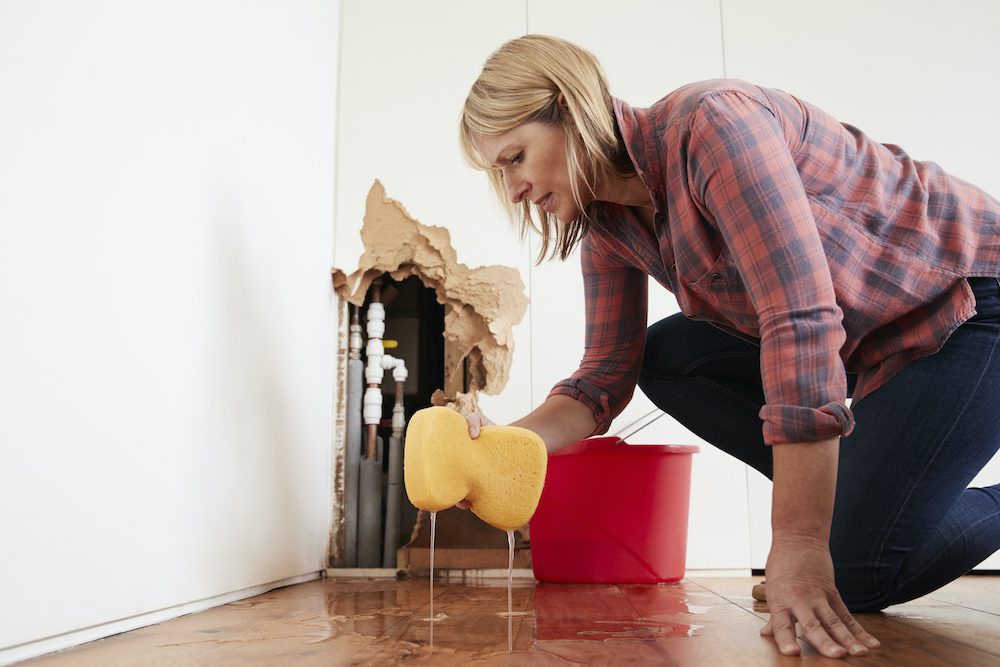Guide To Water Leakage Discovery In The House
Guide To Water Leakage Discovery In The House
Blog Article
Just how do you actually feel in regards to Locating water leaks?

Early discovery of leaking water lines can minimize a prospective calamity. Apart from conserving you money, it will decrease the aggravation and disappointment. The minute you find a leakage, calling your plumber for repairs is the best remedy. Some tiny water leakages may not be visible. Right here are some hacks that help if you can not discover it with your nude eyes.
1. Take A Look At the Water Meter
Every home has a water meter. Examining it is a surefire manner in which helps you find leaks. For starters, switch off all the water resources. Guarantee nobody will purge, make use of the faucet, shower, run the cleaning device or dish washer. From there, most likely to the meter and watch if it will certainly change. Given that no one is using it, there should be no motions. If it moves, that suggests a fast-moving leakage. Similarly, if you spot no changes, wait a hr or 2 as well as check back once again. This means you might have a slow leakage that might even be below ground.
2. Inspect Water Consumption
If you identify unexpected modifications, despite your intake being the very same, it suggests that you have leaks in your plumbing system. A sudden spike in your costs suggests a fast-moving leakage.
At the same time, a constant increase each month, despite having the very same habits, shows you have a sluggish leak that's likewise gradually rising. Call a plumber to extensively examine your home, specifically if you really feel a cozy location on your flooring with piping below.
3. Do a Food Coloring Test
When it comes to water usage, 30% comes from bathrooms. If the color in some way infiltrates your dish throughout that time without flushing, there's a leakage in between the tank and dish.
4. Asses Outside Lines
Do not forget to check your outdoor water lines as well. Examination spigots by attaching a garden hose pipe. Ought to water leak out of the link, you have a loose rubber gasket. Replace this and make sure all connections are limited. If you've got a lawn sprinkler, it will help get it expertly analyzed as well as maintained annually. One tiny leakage can throw away tons of water and surge your water bill.
5. Analyze the circumstance and examine
Homeowners must make it a habit to inspect under the sink counters and also even inside cabinets for any bad odor or mold and mildew growth. These 2 red flags indicate a leak so prompt attention is required. Doing routine inspections, also bi-annually, can conserve you from a significant problem.
Examine for stainings and also damaging as a lot of devices and also pipelines have a life expectancy. If you suspect dripping water lines in your plumbing system, do not wait for it to rise.
Early discovery of dripping water lines can alleviate a prospective catastrophe. Some tiny water leaks may not be noticeable. Examining it is a proven method that assists you find leaks. One tiny leakage can squander loads of water and increase your water expense.
If you presume leaking water lines in your plumbing system, don't wait for it to rise.
How to Know If Your Home Has a Hidden Leak
Water Meter Reveals Inexplicable Water Usage
If you’d like to test whether or not there’s a leak somewhere in your home, you can do this using your water meter. Here is how to conduct the test:
Don’t use any water in your home for at least 30 minutes; this also means not turning on faucets or water-using appliances.
Go outside, and check your water meter for activity.
If your water meter shows that there was activity, even though no one was using any water, this proves that there is a leak in your home.Visible Mold or Mildew Growth
Leaks behind walls create moist, dark environments that allow mold and mildew to grow and thrive. Eventually, you might see mold growth forming on the wall closest to a hidden leak.
If mold is growing in an area that receives a high amount of moisture, such as a bathroom, it may simply be an indication that better ventilation is needed. However, if you see mold growth on a wall or the ceiling in an area where you would not expect, you probably have a hidden leak.
Musty, Mildew Odor
Sometimes you might not be able to see the mold or mildew that is growing as a result of a leak. However, the smell can give the problem away just as easily. If you catch a whiff of something musty, there’s a good chance that old water is collecting somewhere in your home that you can’t see.
Stained/Warped Walls, Ceilings, or Floors
When your home soaks up water, a variety of red flags can become visible, including ceiling stains, bubbling drywall, warped walls, and sagging floors. While these issues can be caused by excess humidity, they can also be signs that a pipe or plumbing connection has started leaking behind your walls.
Inexplicably High Water Bill
After a while, you get a general sense for what your water bill should be. If you own a pool or sprinkler system, your bill will tend to be higher during summer. However, if you receive a water bill that seems especially high, and you can’t figure out what caused it, then you may have a hidden leak somewhere that’s increasing your bill.
https://www.plumbingjoint.com/blog/2019/july/how-to-know-if-your-home-has-a-hidden-leak/

We were shown that editorial on Hacks to detect leaks from an associate on a different site. Are you aware of somebody else who is curious about the niche? Take a moment to share it. Thanks so much for your time spent reading it.
Report this page